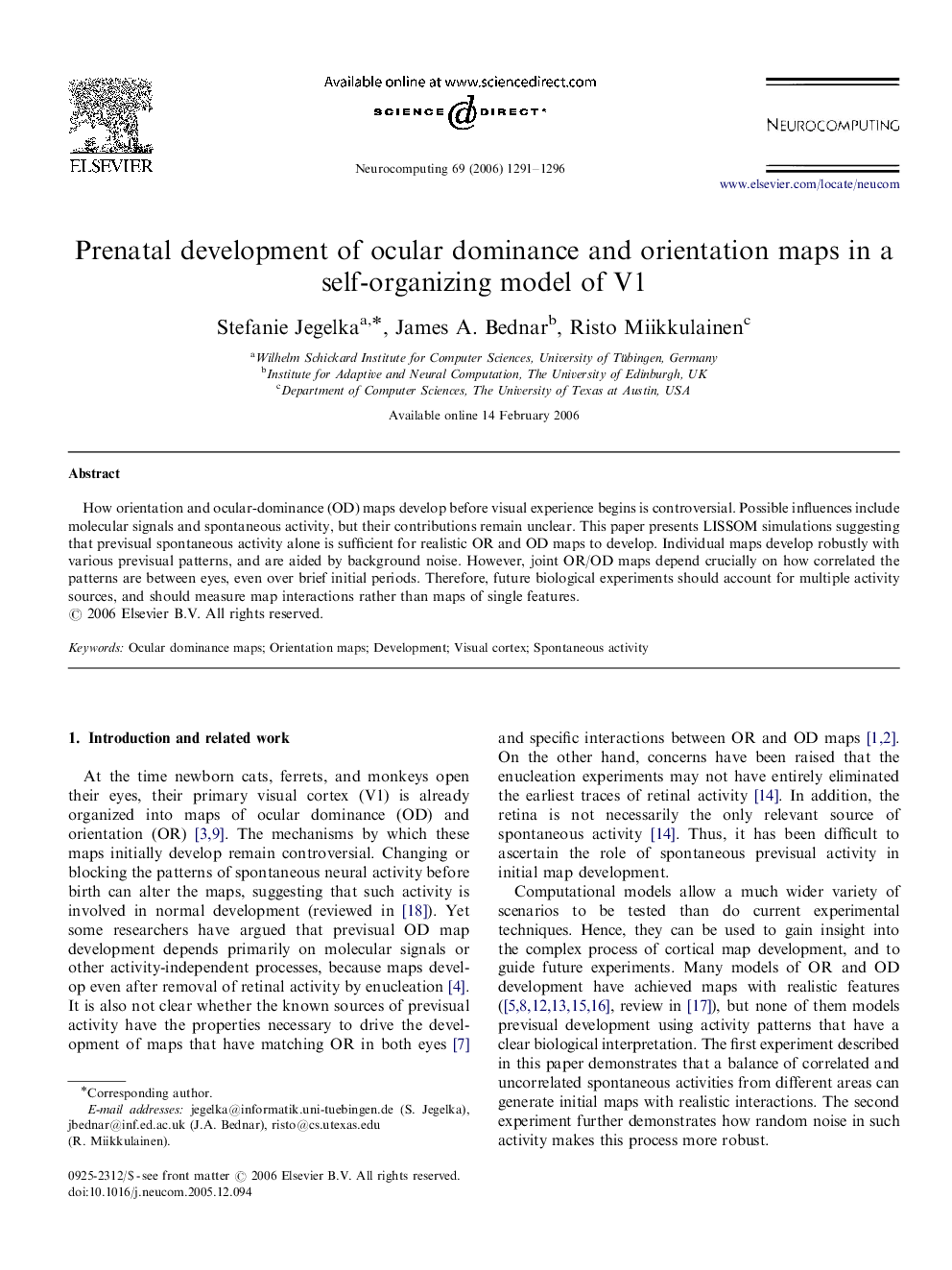| Article ID | Journal | Published Year | Pages | File Type |
|---|---|---|---|---|
| 408760 | Neurocomputing | 2006 | 6 Pages |
Abstract
How orientation and ocular-dominance (OD) maps develop before visual experience begins is controversial. Possible influences include molecular signals and spontaneous activity, but their contributions remain unclear. This paper presents LISSOM simulations suggesting that previsual spontaneous activity alone is sufficient for realistic OR and OD maps to develop. Individual maps develop robustly with various previsual patterns, and are aided by background noise. However, joint OR/OD maps depend crucially on how correlated the patterns are between eyes, even over brief initial periods. Therefore, future biological experiments should account for multiple activity sources, and should measure map interactions rather than maps of single features.
Related Topics
Physical Sciences and Engineering
Computer Science
Artificial Intelligence
Authors
Stefanie Jegelka, James A. Bednar, Risto Miikkulainen,
